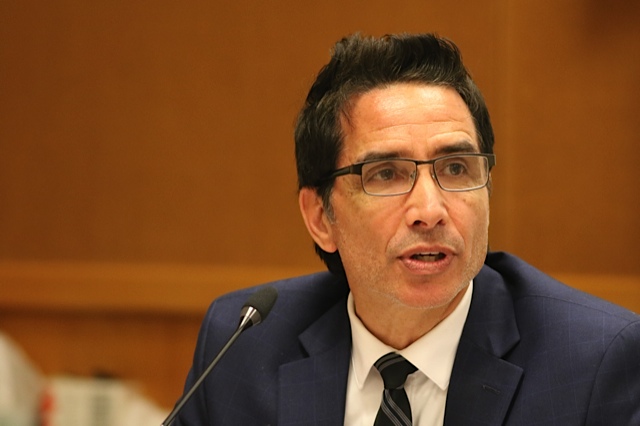His tenure as superintendent of schools in Princeton began on a snowy January day not quite five years ago, the starting point for Stephen C. Cochrane to lead, and change, a public school district seen as one of the best in the state and the nation.
He has sought to redefine what success means for students, focus on their mental and physical well being, and prepare the district and the community at large for a future that, in less than a decade, is expected to see enrollment top 4,500 students.
With schools set to reopen next week, Cochrane paused on a recent morning to share some of the changes in store for the upcoming academic year. It is a 10-month-period that will be highlighted in November by a bond referendum worth $129.6 million to pay for building a new school and for other projects officials have identified.
“The school year is like opening a new book and it’s filled with all these possibilities for meeting new people, exploring new ideas (and) creating new adventures,” he said by phone. “What’s great about a school like Princeton is that we’re sort of writing the book together.”
Starting in September, the school day at Princeton High School will begin 30 minutes later, at 8:20 a.m., to address concerns officials had heard of students not getting enough sleep.
Cochrane said he thought students would welcome the change.
“We know that aligning the schedule of our building with the biology of students’ brains improves learning,” he said. “Our kids are going to be more fully awake when they are learning. It’s going to improve physical and emotional wellness.”
The change in start time also has implications for Cranbury, the community with which Princeton has a send-receive relationship. Cochrane said his district has worked with Cranbury on the change and said there were test runs of school buses “to make sure that starting half an hour later, they are still able to get across Route 1 in time for the start of school at Princeton High School.”
Board of Education President Patrick Sullivan said the later start time is “one piece” of the puzzle to help students. Other steps include limiting the amount of homework they are assigned and “hopefully” limiting the number of advanced placement courses they can take.
The thinking behind those steps, he said, would be to give students more free time and reduce their stress levels.
“I’m happy about the schedule,” Sullivan said, “but I think there will be more that we do.”
More changes could be in store as officials look to develop a calendar for 2019-20, potentially to have schools open before Labor Day. Starting in August likely would be in the last week of that month.
“That’s a discussion now with the board and the teachers (union),” Cochrane said. “It aligns more with what schools are doing across the country, what many colleges are doing.”
Among some other changes, the high school will have block scheduling to provide days when students take classes for longer periods.
For the 2018-19 school year, the district hired 29 new teachers, nine of whom are racial minorities.
Cochrane has emphasized having a more diverse workforce as the Princeton Public Schools has gone recruiting at historically black colleges for talent.
“We are … being very deliberate in that effort and we are bringing in terrific people,” he said.
Then there is the future of the district. The school board is due to vote on Sept. 4 to put the referendum on the ballot for Nov. 6.
Cochrane has sought to make the case for why the community needs to make the investment, chiefly because of enrollment growth projected to exceed 4,500 students by 2027.
“I think everyone recognizes there’s a need here,” he said. “The enrollment is going up. We have more kids who are coming to us. We have to find space for them and so the question is about what kind of space.”
Cochrane said to him, the issue is less about whether the district needs more space and space that supports “high-level learning” than it is about the dollars and cents involved.
“I think the questions come down to cost,” he said. “I get that. Funding is tight at a state level and we are also facing the changes in the federal tax code that limit the amount of property taxes people can deduct. So everyone is asking questions about what is the most fiscally sound way to proceed.”
Cochrane, who will turn 59 in October, is leading a school district in the same community he came to 41 years ago as a teenager to attend Princeton University. In his time here, the stated goal of the district is not for children to attend an Ivy League college or go on to lucrative careers, but that they lead “lives of joy and purpose.”
Cochrane talked of a “cultural shift” and spoke of “risk-taking” and “innovation.” That runs the gamut from schedule changes to other changes in the classroom.
“I would like to believe I’ve made an imprint through bringing people together around a vision for our kids and our community,” he said. “For me, it probably takes five years for the changes to really happen. It’s like steering an aircraft carrier, not steering a speed boat. You have start the turn 10 miles before you actually make the turn. We’re in the midst of making that turn.”

